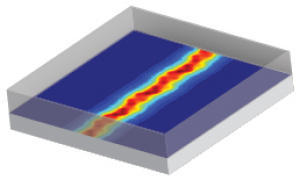AMH
Nanotechnology
Batteries:
They power our phones, our computers, even our cars. But batteries have one big downside, they die! And usually way to soon and at the worst possible time. Chemist Amy Prieto and her colleagues at Colorado State University are working to change that.
A high surface area means it will charge faster. The battery is made up of three main parts: an anode-made of tiny copper nanowires, a cathode-made from a rubber-like material, and an electrolyte-made of plastic that separates the anode from the cathode. Nanowires increase the battery’s performance and are so small that 25 million of them can fit on the surface of a penny. “So, they’re really tiny, that surface area is about 10,000-times higher, so that’s where you get this power from, Prieto explained.
NanoWires:
Ultra-miniature wires just one atom tall have been created by inserting a string of phosphorus atoms in a silicon crystal by a team of researchers from the Univeristy of New South Wales, Melbourne Univeristy and Purdue University. This image from a computational simulation run of the wires shows electron density as electrons flow from left to right. The wires are 20 times smaller than the smallest wires now available and measure just four atoms wide by one phosphorus atom tall. (Credit: Purdue University image/Sunhee Lee, Hoon Ryu and Gerhard Klimeck)
And for physicists, the results show that Ohm’s Law, which demonstrates the relationship between electrical current, resistance and voltage, continues to apply all the way down to an atomic-scale wire.

AMH is proudly powered by WordPress